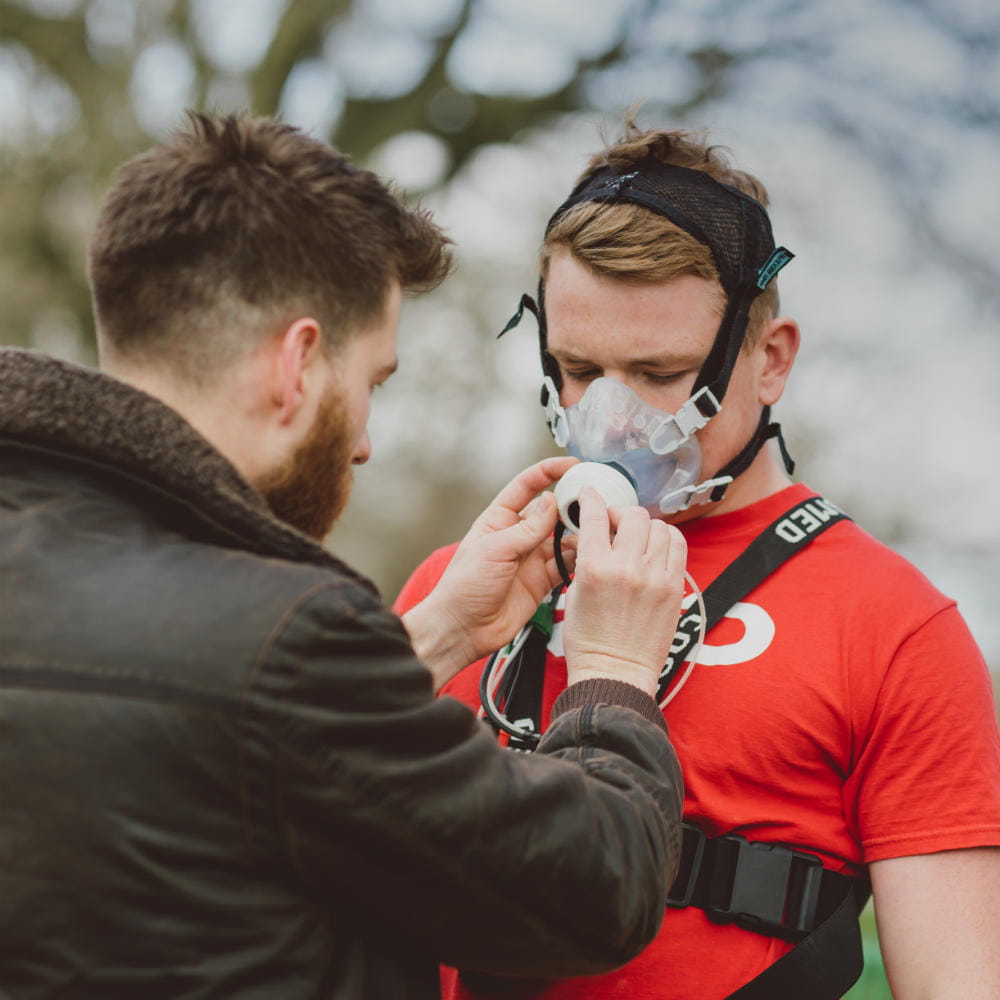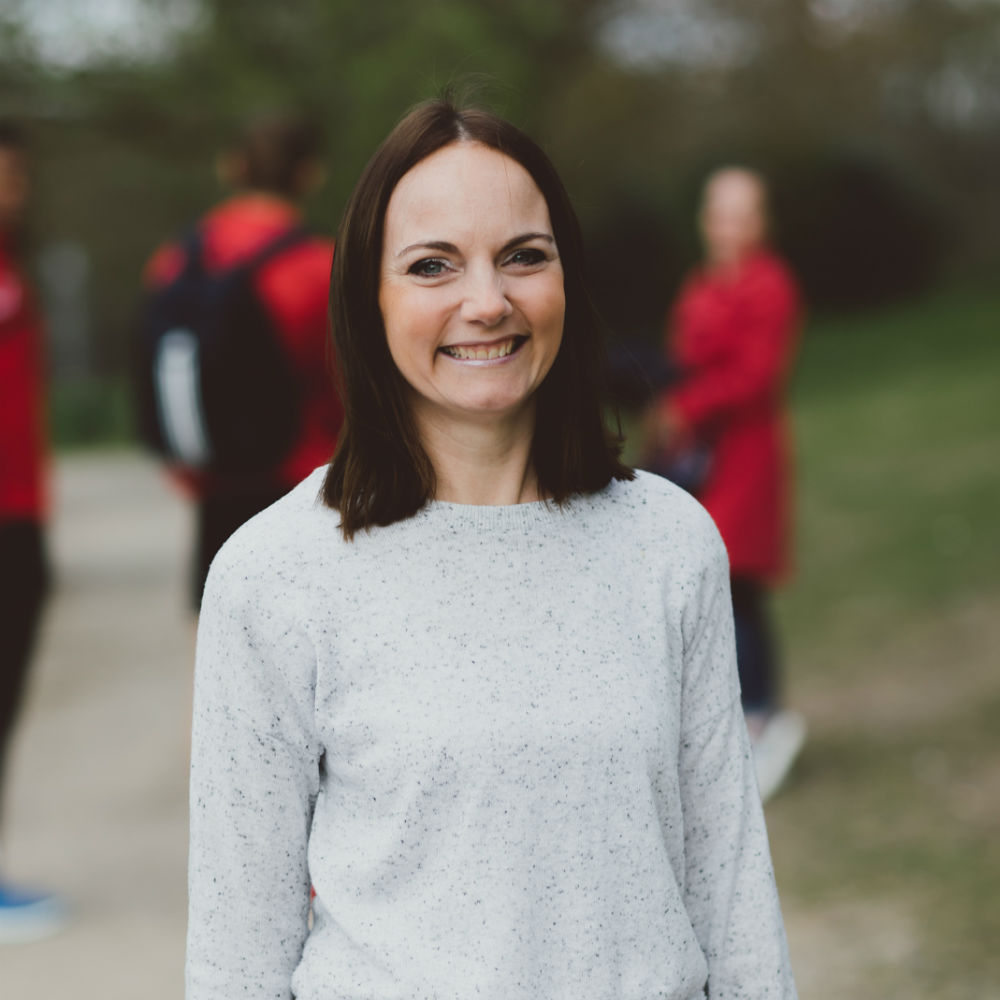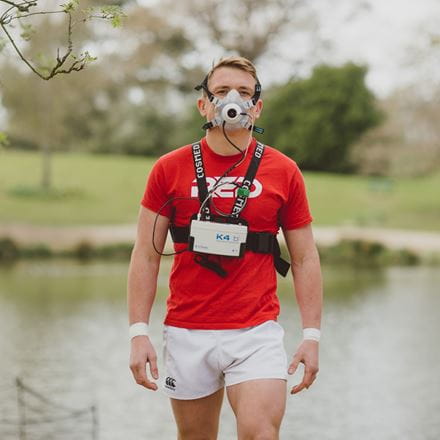Green Exercise
Dr Paul Freeman
Dr Mike Rogerson
Dr Carly Wood

At the University of Essex we have been researching the concept of Green Exercise for 17 years, coining the term itself in 2003.
The Green Exercise Research Team comprises experts in the areas of exercise physiology, health and well-being, environmental sustainability, community engagement, behaviour change.
We examine where, when, how and why Green Exercise brings health and well-being benefits. We aim to understand who can benefit most from Green Exercise, and how it can be used as a means to drive behaviour change.
We also research Green Care - nature-based interventions that promote health and well-being outcomes, often for specific vulnerable groups.
Our research has far-reaching implications for both public health and environmental agenda at a local, national and international level.
Publications
Papers
2020
- Rogerson, Mike and Colbeck, Ian and Bragg, Rachel and Dosumu, Adekunle and Griffin, Murray (2020) 'Affective Outcomes of Group versus Lone Green Exercise Participation.' International Journal of Environmental Research and Public Health, 17 (2). ISSN 1660-4601
- Rogerson, Mike and Wood, Carly and Pretty, Jules and Schoenmakers, Patrick and Bloomfield, Dan and Barton, Jo (2020) 'Regular Doses of Nature: The Efficacy of Green Exercise Interventions for Mental Wellbeing.' International Journal of Environmental Research and Public Health, 17 (5). ISSN 1660-4601
- Wood C, Flynn M, Law R, Naufahu J & Smyth N (2020). The effect of the exercise environment on the response to psychological stress: a pilot study. Anxiety, Stress and Coping, Doi: 10.1080/10615806.2020.1770231
2019
- Hughes, J., Rogerson, M., Barton, J., & Bragg, R. (2019). Age and connection to nature: when is engagement critical?. Frontiers in Ecology and the Environment.
- Wood C, Barron D & Smyth N (2019). The current and retrospective intentional nature exposure scales: Development and factorial validity. International Journal of Environmental Research & Public Health, DOI:10.3390/ijerph16224443
- Wood C & Smyth N (2019). The health impact of nature exposure and green exercise across the life course: A pilot study. International Journal of Environmental Health Research, DOI: 10.1080/09603123.2019.1593327
2018
- Gladwell, V., Wooller, J. J., Rogerson, M., Barton, J., & Micklewright, D. (2018). Can simulated green exercise improve recovery from acute mental stress? Frontiers in Psychology, 9, 2167.
- Flowers, Elliott P and Freeman, Paul and Gladwell, Valerie F (2018) 'Enhancing the acute psychological benefits of green exercise: An investigation of expectancy effects.' Psychology of Sport and Exercise, 39. 213 - 221. ISSN 1469-0292
2017
- Pretty, J., Rogerson, M., & Barton, J. (2017). Green Mind Theory: How Brain-Body-Behaviour Links into Natural and Social Environments for Healthy Habits. International Journal of Environmental Research and Public Health, 14(7), 706.
- Barton, J., & Rogerson, M. (2017). Themed editorial: The importance of green space for mental health. BJPsych International
- Rogerson, M. (2017). Commentary: Environmental Influences on Elite Sport Athletes Well Being: From Gold, Silver, and Bronze to Blue, Green and Gold. Frontiers in psychology, 8(78). doi:10.3389/fpsyg.2017.00078
2016
- Gladwell, V. F., Kuoppa, P., Tarvainen, M. P., & Rogerson, M. (2016). A Lunchtime Walk in Nature Enhances Restoration of Autonomic Control during Night-Time Sleep: Results from a Preliminary Study. International journal of environmental research and public health, 13(3), 280.
- Barton, J., Bragg, R., Pretty, J., Roberts, J., & Wood, C. (2016). The Wilderness Expedition An Effective Life Course Intervention to Improve Young People’s Well-Being and Connectedness to Nature. Journal of Experiential Education, 1053825915626933.
- Rogerson, M., Gladwell, V. F., Gallagher, D. J., & Barton, J. L. (2016). Influences of Green Outdoors versus Indoors Environmental Settings on Psychological and Social Outcomes of Controlled Exercise. International Journal of Environmental Research and Public Health, 13(4), 363.
- Wood C, Pretty J & Griffin M (2016). A case-control study of the health and wellbeing benefits of allotment gardening. Journal of Public Health, 38(3): e336-344. DOI:10.1093/pubmed/fdv146
2015
- Rogerson M and Barton J (2015). Effects of visual exercise environments on cognitive directed attention, energy expenditure and perceived exertion. International Journal of Environmental Research and Public Health, 12: 7321-7336.
- Rogerson M, Brown D, Sandercock G, Wooller JJ and Barton J (2015). A comparison of four typical green exercise environments and prediction of psychological health outcomes. Perspectives in Public Health, DOI: 10.1177/1757913915589845
- Pretty J, Barton J, Bharucha Z, Bragg R, Pencheon D, Wood C and Depledge MH (2015). Improving health and well-being independently of GDP: Dividends of greener and prosocial economies. International Journal of Environmental Health Research, DOI: 10.1080/09603123.2015.1007841
- Wood C and Hall K (2015). Playtime or Physical Education: Which is more effective at promoting physical activity in primary school children? BMC Research Notes, DOI: 10.1186/s13104-015-0979-1
- Wooller, J. J., Barton, J., Gladwell, V. F., & Micklewright, D. (2015). Occlusion of sight, sound and smell during Green Exercise influences mood, perceived exertion and heart rate. International journal of environmental health research, 1-14.
2014
- Brown DK, Barton JL, Pretty J and Gladwell VF (2014). Walks4Work: Assessing the role of the natural environment in a workplace physical activity intervention. Scandinavian Journal of Work, Environment and Health, 40: 390-399
- Wood C, Gladwell V and Barton JL (2014). A repeated measures experiment of school playing environment to increase physical activity and enhance self-esteem in UK school children. Plos One, DOI: 10.1371/journal.pone.0108701
- Barton J, Sandercock G, Pretty and Wood C (2014). The effect of playground- and nature-based playtime interventions on physical activity and self-esteem in UK school children. International Journal of Environmental Health Research, 12:1-11
- Wood C, Sandercock G and Barton JL (2014). Interactions between physical activity and the environment to improve adolescent self-esteem: a randomised controlled trial. International Journal of Environment and Health, 7: 144-155
2013
- Reed K, Wood C, Barton J, Pretty J, Cohen D et al (2013). A repeated measures experiment of green exercise to improve self-esteem in UK school children. Plos One, DOI: 10.1371/journal.pone.0069176.
- Brown DK, Barton JL and Gladwell VF (2013). Viewing nature scenes positively affects recovery of autonomic function following acute mental stress. Environmental Science and Technology, 47: 5562-5569.
- Gladwell VF, Brown, DK, Wood CJ, Sandercock GR and Barton JL (2013). The great outdoors: How a green exercise environment can benefit all. Extreme Physiology and Medicine, 2:3.
2012
- Gladwell VF, Brown DK, Barton JL, Tarvainen MP, Kuoppa P et al (2012). The effects of views of nature on autonomic control. European Journal of Applied Physiology, 112: 3379-3386.
- Akers A, Barton J, Cossey R, Gainsford P, Griffin M et al (2012). Visual colour perception in Green Exercise: Positive effects on mood and perceived exertion. Environmental Science and Technology, 46: 8661-8666
- Wood C, Angus C, Pretty J, Sandercock G and Barton, J. (2012). A randomised control trial of physical activity in a perceived environment on self-esteem and mood in adolescents. International Journal of Environmental Health Research, DOI: 10.1080/09603123.2012.733935
- Brown DK, Barton JL, Pretty J and Gladwell VF (2012). Walks4work: Rationale and study design to investigate walking at lunchtime in the workplace setting. BMC Public Health, 12: 550
2011
- Thomson Koon J, Boddy K, Stein K, Whear R, Barton J et al (2011). Does Participating in Physical Activity in Outdoor Natural Environments Have a Greater Effect on Physical and Mental Well-being than Physical Activity Indoors? A Systematic Review. Environmental Science and Technology DOI: 10.1021/es102947t
- Barton J, Griffin M and Pretty, J. (2011). Exercise, Nature and Socially Interactive Based Initiatives Improve Mood and Self-esteem in the Clinical Population. Perspectives in Public Health. DOI: 10.1177/1757913910393862
2010
- Haubenhofer DK, Elings M, Hassink J and Hine RE (2010). The development of green care in Western European Countries. Explore, 6(2):106-111
- Barton J and Pretty, J. (2010). What is the best dose of nature and green exercise for improving mental health. A multi-study analysis. Environmental Science and Technology, DO1: 10.1021/es90318r
- Singh R, Pretty J and Pilgrim S (2010). Traditional knowledge and biocultural diversity: learning from tribal communities for sustainable development in Northeast India. Journal of Environment Planning and Management, 53(4): 511-533
- Sandercock G, Angus C and Barton J (2010). Physical activity levels of children living in different built environments. Preventive Medicine, DOI: 10.1016/j.ypmed.2010.01.005
2009
- Pilgrim S, Samson C and Pretty J (2009). Rebuilding a lost connection: Revitalisation projects and cultural regeneration. Sustain, 10: 16
- Barton J, Hine R and Pretty J (2009). The health benefits of walking in greenspaces of high natural and heritage value. Journal of Integrative Environmental Sciences, 6: 1-18
- Pretty J, Angus C, Bain M, Barton J, Gladwell V, Hine R, Pilgrim S, Sandercock G and Sellens M (2009). Nature, childhood, health and life pathways. Interdisciplinary Centre for Environment and Society. Occasional Paper 2009, University of Essex, UK.
- Pretty J, Adams B, Berkes F, de Athayde S, Dudley N et al (2009). The intersections of biological diversity and cultural diversity: Towards integration. Conservation and Society, 7: 100-112
2008
- Hine R, Peacock J and Pretty, J. (2008). Care farming in the UK: Contexts, benefits and links with therapeutic communities. International Journal of Therapeutic Communities, 29
- Hine, R. (2008). Care farming: Bringing together agriculture and health. ECOS, 29: 42-51
- Pretty J and Pilgrim S (2008). Nature and Culture. Resurgence, 250.
- Pilgrim SE, Cullen L, Smith DJ and Pretty J (2008). Ecological knowledge is lost in wealthier communities and countries. Environmental Science and Technology, 42:1004-1009
2007
- Pretty J, Peacock J, Hine R, Sellens M, South N et al (2007). Green Exercise in the UK countryside: Effects on health and psychological well-being, and implications for policy and planning. Journal of Environmental Planning and Management, 50: 211-231
- Pilgrim S, Smith DJ and Pretty J (2007). A cross-regional quantitative assessment of the factors affecting ecoliteracy: implications for conservation policy and practice. Ecological Applications, 17: 1742-51.
- Pilgrim S, Smith D and Pretty J (2007). Ecoliteracy in Indonesia. Bulletin of the ecological Society of America, 88
- Pilgrim S, Cullen L, Smith DJ and Pretty J (2007). Hidden harvest or hidden revenue. Indian Journal of Traditional Knowledge, 6: 150-159
- Cullen L, Smith DJ, Pretty J and Pilgrim SE (2007). The links between local ecological knowledge and wealth in indigenous communities. International journal of Social Science, 2: 289-299.
2006
- Pretty J, Hine R and Peacock J (2006). Green Exercise: the benefits of activities in green places. The Biologist, 53: 143-148
- Pretty J (2006). Physical activity in modern society: is there also an environmental benefit. Environmental Conservation, 32: 87-88
- Samson C and Pretty J (2006). Environmental and health benefits of hunting lifestyles and diets for the Innu of Labrador. Food Policy, 31: 528-553
2005
- Pretty J, Peacock J, Sellens M and Griffin M (2005). The mental and physical health outcomes of green exercise. International Journal of Environmental Health Research, 15: 319-337
Books and chapters
Rogerson, M., Gladwell, V., Pretty, J., & Barton, J. (2019). Landscape and wellbeing. In: The Routledge Companion to Rural Planning (pp. 495-507). Routledge.
Rogerson, M., Barton, J., Pretty, J., & Gladwell, V. (2019). The green exercise concept: Two intertwining pathways to health and well-being. In: Physical Activity in Natural Settings (pp. 75-94). Routledge.
Rogerson, M., Kelly, S., Coetzee, S., Barton, J., & Pretty, J. (2019). ‘Doing’ Adventure: The mental health benefits of using occupational therapy approaches in adventure therapy settings. In: Physical Activity in Natural Settings (pp. 241-255). Routledge.
Barton, J., Wood, C., Pretty, J., & Rogerson, M. (2016). Green exercise for health. Green exercise: Linking nature, health and well-being, 26.
Barton, J., Bragg, R., Wood, C., & Pretty, J. (2016). Green Exercise: Linking Nature, Health and Well-being. Abingdon, Oxfordshire, UK: Routledge.
Pretty J, Wood C, Bragg R and Barton J (2013). Nature for rehabilitating offenders and facilitating therapeutic outcomes in youth at risk. In: South N and Brisman A. eds. Routledge International Handbook of Green Criminology. Routledge.
Pretty J, Barton J, Hine R, Mourata S, Mackerron G et al (2011). Health values from ecosystems. In: The UK National Ecosystem Technical Report. Uk National Ecosystem Assessment, UNEP-WCMC, Cambridge.
Barton J and Pretty J (2010). Urban ecology and human health and well-being- the relationship between nature and human health and well-being in urban areas and the consequences. In: Gaston K et al. eds. Urban Economy. British Ecological Society and Cambridge University Press.







